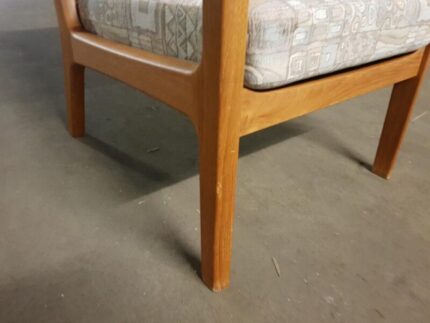Listed in the Ferdinand Barbedienne’s catalogue as the “Deux femmes debout” (Two standing ladies)
Signed on each one P. Dubois – F. Barbedienne Fondeur and A. Falguière – F. Barbedienne Fondeur
Rare pair of parcel-gilt and patinated bronze figures, representing two women dressed in Antique style costume with jewels, each upholding a seven lights-arm candelabra. Standing on round bronze bases and black marble socles.
Paul Dubois (1827-1905) entered the Paris Beaux-Arts School in 1858. He exhibited at the 1865 Salon the Chanteur Florentin, illustrating Florentine sculpture, observed after his journey in Italy. This work, cast that time in silvered bronze, was exhibited at the 1867 Paris Universal Exhibition (now preserved at the Orsay museum). Dubois’ success brought him many commissions, both private (Portrait of Duc d’Aumale) and public (Jeanne d’Arc, in Reims). Appointed curator at the Luxembourg museum in 1873, Dubois became also a member of the Institute and finally headmaster at the Beaux-Arts School in 1878.
Alexandre Falguière (1831-1900) studied under Jouffroy at the Paris Ecole des Beaux-Arts, began his career at the Paris Salon in 1857 and won as soon as 1859 the “Prix de Rome”. Falguière became very quickly successful and was several times awarded medals at the Salon, such in 1868 with his marble sculpture Tarcisius the Christian Boy-Martyr, or at the 1867 Paris Universal Exhibition, where he won the first medal in his category. Thanks to that success, he was immediately commissioned by private collectors as well as by the French State, whom asked him in 1878 to realize the Triomphe de la République, placed in 1881 at the summit of the Paris Arch of Triumph (taken down in 1886). After having created in the conventional classical mould, Falguière turned his art to Realism, as shows this bust of Diana, very close in style to portraits of Parisian ladies. Falguière was considered as one of the inventors of Realism in sculpture, in the 19th century French school and was then awarded 1870 the Ordre national de la Légion d’honneur, France’s highest official mark of recognition.
Ferdinand Barbedienne (1810-1892) started one of the most famous 19th century artistic bronze casting companies. In addition to his personal production, he worked for famous artists such Barrias, Clésinger, and Carrier-Belleuse. These artists production – as shown in their illustrated catalogue – varied from busts and decorations for furniture, to ornamental sculptures such as clocks and candlesticks. Barbedienne’s production was always highly esteemed and he was, himself admired by contemporary art critics who compared him during the 1878 Universal Exhibition to a “prince of industry and the king of bronze-casting”. In the catalogue of the Exhibition Barbedienne was considered as the leader among 19th century bronze casters.
-
Creator:Ferdinand Barbedienne(Maker),Paul Dubois(Sculptor),Jean Alexandre Joseph Falguière 1(Sculptor)
-
Dimensions:Height: 50.01 in (127 cm)Width: 16.93 in (43 cm)Depth: 23.63 in (60 cm)
-
Sold As:Set of 2
-
Materials and Techniques:BronzeGiltPatinated
-
Place of Origin:France
-
Period:1860-1869
-
Date of Manufacture:circa 1867
-
Condition:GoodWear consistent with age and use.
-
Seller Location:PARIS, FR
-
Reference Number:Seller: LU3860320618772



























































Reviews
There are no reviews yet.